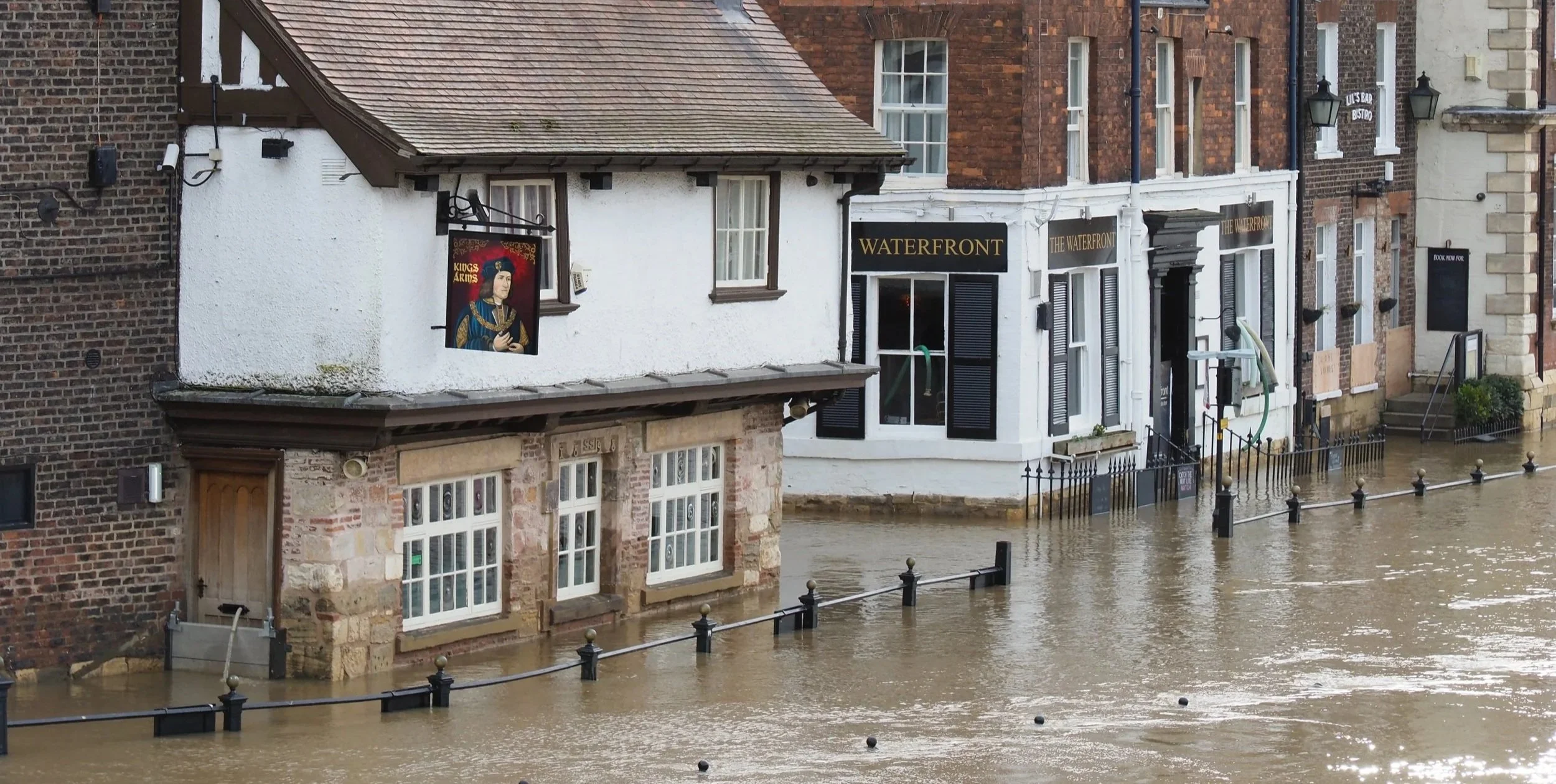Water Whiplash - Why Drought Still Matters in Autumn and How it Fuels Flash Floods
Autumn in England usually means relief from summer heat. This year, though, hosepipe bans lingered into October even as rain fell outside. It sounds strange, but it is not a bureaucratic glitch. It is a warning sign of a water system under pressure and a climate swinging between extremes. Those dry months could be setting us up for the next big flood.
Our Insight Lead, Tom Watkins, and Partnership Lead, Becky Maynard, have been reflecting on water whiplash, what this could mean for the months ahead and what actions need to be taken.
Why Are We Saving Water When It Is Raining?
When we think of drought, we picture scorched lawns and empty reservoirs. But in 2025, hosepipe bans stretched well into autumn. Many of us asked why we were still told to save water when the skies had turned grey. The answer is that drought does not just mean dry ground. It can also increase the risk of flash flooding.
It is easy to assume that once the rain returns, everything goes back to normal. This year proved otherwise. Spring 2025 was the driest England had seen in over a century. Reservoirs dropped to critical levels and groundwater did not bounce back quickly. Even when autumn showers arrived, they were not enough to undo months of deficit. The Environment Agency kept large parts of the country under drought status because water systems needed time to recover.
The Link Between Drought and Flooding
The impact of a lack of water followed by an abundance of it can seem counterintuitive. After a long dry spell, the ground becomes hard and almost waterproof. When heavy rain finally hits, instead of soaking in, water rushes across the surface. Add climate change to the mix and storms after droughts tend to be more intense because warmer air holds more moisture. It is a recipe for flash flooding.
Scientists call this “hydroclimate whiplash” which, simply put, means rapidly swinging from one extreme to another. It is not just a theory. We are seeing it play out in real time.
In September 2024, Bedfordshire and parts of London were bone dry after summer then got a month’s worth of rain in just 24 hours. Streets turned into rivers. Fast forward to June 2025 and thunderstorms unleashed 30 millimetres of rain in hours across Hampshire and Kent, overwhelming drains on drought-hardened ground.
Why This Matters for All of Us
Drought is not just a farming or water availability problem. It is a resilience challenge for people and their communities. Water shortages strain our ecosystems and sudden floods damage homes and infrastructure. With climate change amplifying extremes, England faces a future where drought and flood risks are two sides of the same coin.
What Can We Do?
Protecting our homes and communities starts with thinking bigger than sandbags. We need to design for resilience, not just response. That means investing in sustainable drainage systems that mimic nature such as:
Green roofs
Rain gardens
Permeable pavements that let water soak in rather than surge through streets
On a larger scale, restoring wetlands and planting trees can slow runoff and store water during dry spells.
Property-level action matters too:
Harvest rainwater
Install water butts or tanks connected to roof downpipes to collect rain for garden use. Larger systems can store water for toilets and washing machines.
Install water-efficient appliances
Choose low-flow taps, showerheads, and dual-flush toilets to reduce demand on mains water and ease pressure during droughts.
Maintain good drainage around homes
Keep gutters clear, check soakaways, and use permeable surfaces for driveways and patios so rain can soak in rather than run off.
The climate piece is essential to future sustainability. Every tonne of carbon we cut reduces the intensity of these extremes. Supporting renewable energy, reducing waste, and pushing for stronger climate policies is not just about the planet. It is about protecting our front doors from the next flood and safeguarding future generations.
References:

